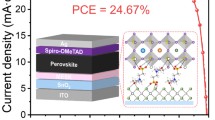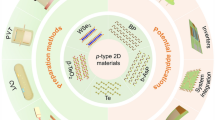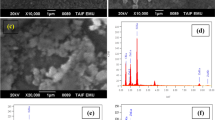Abstract
ZnS films were deposited on porous silicon (PS) substrates with different porosities by pulsed laser deposition (PLD). The crystalline structure, surface morphology of ZnS films on PS substrates and optical, electrical properties of ZnS/PS composites were studied. The results show that, ZnS films deposited on PS substrates were grown in preferred orientation along β-ZnS (111) direction corresponding to crystalline structure of cubic phase. With the increase of PS porosity, the XRD diffraction peak intensity of ZnS films decreases. Some voids and cracks appear in the films. Compared with as-prepared PS, the PL peak of PS for ZnS/PS has a blueshift. The larger the porosity of PS, the greater the blueshift is. A new green light emission located around 550 nm is observed with increasing PS porosity, which is ascribed to defect-center luminescence of ZnS. The blue, green emission of ZnS combined with the red emission of PS, a broad photoluminescence band (450–750 nm) is formed. ZnS/PS composites exhibited intense white light emission. The I–V characteristics of ZnS/PS heterojunctions showed rectifying behavior. Under forward bias conditions, the current density is large. Under reverse bias conditions, the current density nearly to be zero. The forward current increases with increasing PS porosity. This work lay a foundation for the realization of electroluminescence of ZnS/PS and solid white light emission devices.
Similar content being viewed by others
References
S. Velumani and J. A. Ascencio, Appl. Phys. A 79(1), 153 (2004).
Z. X. Jiu, B. L. Zhang, and N. Yao, Las. Technol. 28(6), 620 (2004).
S. Yano, R. Schroeder, H. Sakai, et al., Appl. Phys. Lett. 82(13), 2026 (2003).
N. K. Morozova, I. A. Karetnikov, V. G. Plotnichenko, et al., Semiconductors 38(1), 36 (2004).
L. T. Canham, Appl. Phys. Lett. 57(10), 1046 (1990).
P. Zhang, P. S. Kim, and T. K. Sham, J. Appl. Phys. 91(9), 6038 (2002).
D. S. Xu, G. L. Guo, and L. L. Gui, Appl. Phys. Lett. 75(4), 481 (1999).
A. Gokarna, N. R. Pavaskar, S. D. Sathaye, et al., J. Appl. Phys. 92(4), 2118 (2002).
T. Ben Nasrallah, M. Amlouk, J. C. Bernede, et al., Phys. Stat. Sol. 201(14), 3070 (2004).
C. F. Wang, Q. S. Li, B. Hu, and W. B. Li, Chin. Phys. B 18(6), 2610 (2009).
Y. C. Peng, and Y. L. He, Chin. J. Quantum. Electron. 16(1), 1 (1999) (in Chinese).
Author information
Authors and Affiliations
Corresponding author
Additional information
The article is published in the original.
Rights and permissions
About this article
Cite this article
Wang, CF., Hu, B., Yi, HH. et al. The effect of PS porosity on the structure, optical and electrical properties of ZnS/PS. Opt. Spectrosc. 116, 427–430 (2014). https://doi.org/10.1134/S0030400X14030254
Received:
Published:
Issue Date:
DOI: https://doi.org/10.1134/S0030400X14030254




